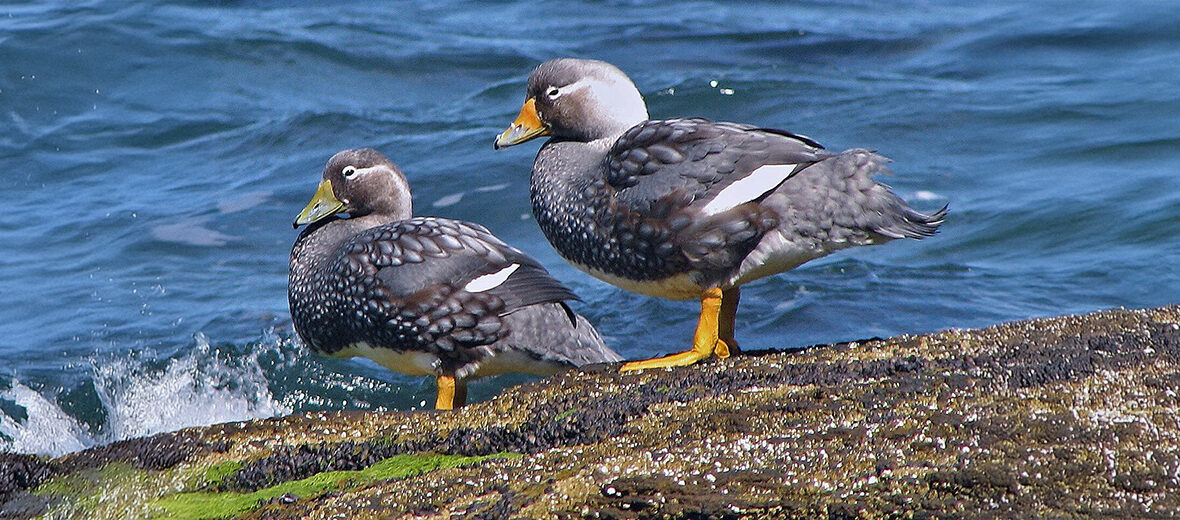
The chubut steamer duck, aka white-headed flightless steamer duck, Falkland steamer duck, or white-headed steamer duck, is a flightless duck that hails from Argentina. These ducks face the threats of habitat loss and destruction at the hands of mining and oil drilling; hunting; trapping; overfishing; recreational activities, that interrupt their breeding; harvesting of guano and macro algae; and invasive species, primarily the green crab and that feasts on the food they eat, and Asian kelp that outcompetes with the native flora, which reduces the food source of the creatures these ducks depend on. The IUCN lists these ducks as Vulnerable. Their populations are also decreasing.
First the Stats…
Scientific name: Tachyeres leucocephalus
Weight: Up to 10.58 lbs.
Length: Up to 29.13 inches
Wingspan: Up to 37 inches
Lifespan: Up to 20 years
Now on to the Facts!
1.) They are the most recently recognized species of steamer duck. This is because they are only found along a rather small and sparsely populated stretch of coast around the Golfo San Jorge in southern Chubut and northern Santa Cruz Provinces, and also because steamer ducks in general look rather similar in plumage.
2.) These ducks were first described by the Italian naturalist Giovani Antonio Scopoli in 1769.
3.) Molluscs and crustaceans are their primary food source.
4.) Caracaras, foxes, and American minks all prey on these ducks. At sea, they face sea lions and orcas.
5.) They also face the threat of overharvesting of their eggs by humans.
But wait, there’s more on the chubut steamer duck!
6.) Breeding season lasts from October – February.
7.) Nests are constructed from grass, sticks, and litter found from the high tide.
Did you know…?
From an estimated 100,000 individuals in the 20th century, there are but 13,000+/- remaining as of recent years.
8.) Females lay up to 6 eggs that hatch in up to 40 days.
9.) To escape predation, these ducks will dive, swim, or steam. Steaming is the fastest and most unique way to swim for these birds. When steaming they use their wings as oars and their feet to generate turbulence. They are capable of speeds up to 14.91 mph when steaming.
10.) Nearly half of their population (46%) is protected by the Interjurisdictional Marine Park in the San Jorge Gulf. The UNESCO Biosphere Reserve has also included their breeding range in its program.
Now a Short Chubut Steamer Duck Video!
Be sure to share & comment below! Also, check out the Critter Science YouTube channel. Videos added regularly!

Want to suggest a critter for me to write about? Let me know here.
Some source material acquired from: Wikipedia & IUCN
Photo credit: Hugo Hulsberg



